FEATURES|COLUMNS|Creativity and Contemplation
Dharma’s Garden – Nourishing the Local Community through Homesteading
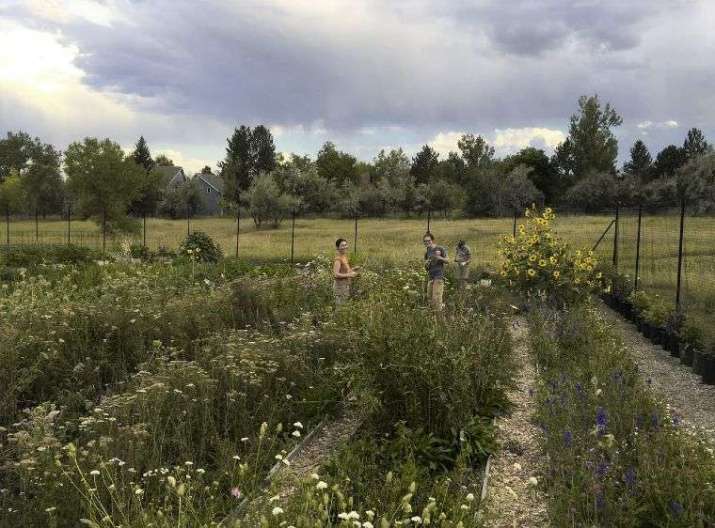 Photo by Dharma’s Garden
Photo by Dharma’s GardenI studied teacher training at the Rudolf Steiner College near Sacramento, California, and while there, I lived for a time on their biodynamic farm. I learned so much about flow forms, runner ducks, and how to prepare soil enhancements from animal manure and other magical substances. Biodynamic farming is a truly unique approach that goes even beyond organic or regenerative farming to the very soul or spirit of the soil. It is based on not only the plants and seeds and how to nurture them, but also draws on a spiritual as well as biochemical point of view.*
It was a very special experience for me to live on that land. And it wasn’t until I visited Dharma’s Garden in Boulder, Colorado, this past spring, that I was reminded of so many fond memories—on early morning strolls watching the ducks meander through the vegetables and flowers and listening to the water flowing through sculptural forms that regenerate the life force of the water before it is used to irrigate the plant beds. Biodynamic farmers work in concert with the whole community in which they live to nourish people, celebrate festivals, include local school children, and to honor the changing of the seasons in ways that connect people more deeply with our common roots as agriculturalists or hunter-gatherers.
Dharma’s Garden is a continuous homestead in North Boulder that also features a protected wildlife corridor, cultivated areas, orchards, large old-growth trees, and waterways:
Our focus is on sharing the experience of tending the land, connecting with nature, and connecting to each other, through small-scale sustainable agriculture. We offer many classes & workshops, youth camps, apprenticeship opportunities, and seasonal events. (Dharma’s Garden)**
In Middle English, tenden means “to stretch, spread, direct oneself, or incline toward.” Going back to the Latin tendere meaning, “to extend outward, stretch, spread out, direct [one’s course], aim [at a purpose],” we start to understand why tending a garden or farm is a movement outward to connect land (ecosystem), life (animal, vegetable, micro), and community (sustenance and social), sewn together to support the well-being of all three. To tend is both to care and to care for one’s symbiotic influence in the natural world through cultivation and stewardship.
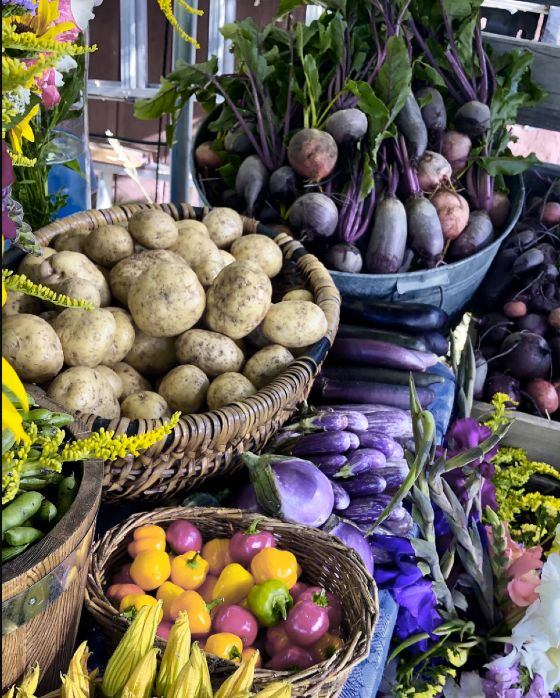
Photo by Dharma’s Garden
In previous articles, I have proposed the idea that large gardens and small farms can actually save the world. Of course, we would have to define what is meant by save. In the example of Dharma’s Garden, I can give a few ideas. It includes maintaining a wildlife corridor as well as a place to research native bird and bee habitats and habit patterns. It includes producing organic, local food for a large neighborhood, which is based on the symbiotic relationship of the farmers and the neighbors who cultivate the land as well as community. The community is multi-age and multi-ethnic and includes people who understand how to garden or farm and those who are learning:
Dharma’s Garden is situated on a five-acre [two-hectare] parcel of land traversed by Wonderland Creek in Northwest Boulder Colorado. Sheep grazed this land in the early 1900s and it has been largely untouched since then. In 2014, Boulder native Tim Francis and his wife, Kerry settled onto the land and cultivated a half-acre garden with the intention of sharing some of its magic with the surrounding community, as well as the wider world. (Dharma’s Garden)
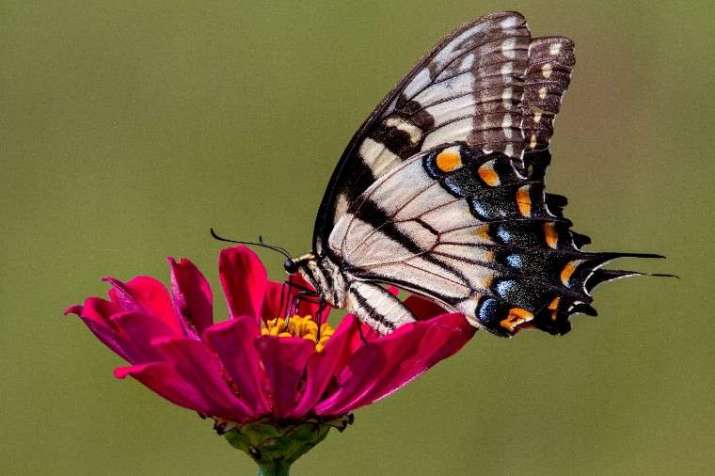 Photo by Joshua J. Cotton
Photo by Joshua J. CottonMy most noteworthy impression of spending a long evening at Dharma’s Garden was the sense of being in a system that is wholesome. Not in the sense of morality or anything of that nature but literally something whole. A complete system with nothing left out. It is both wild and tame. The plants, animals, insects, and humans intermingle seamlessly. Along with a duck pond, there are garden beds, hedges, and berry vines all laid out in sensible ways for sowing and harvesting.
Still, there is a sense that in the area of open space—including a natural historical wildlife corridor on one side and a small Waldorf school on the other—everything has its space. The farmhouse sits in between, bookended by the 2,000-square-meter garden and a small greenhouse area, where the market is held each week during spring, summer, and fall. The two hectares feel like an entire universe, supported by water, soil, sunlight, shade, and space, in which to grow, develop, share, and simply just to be. This place to be is as crucial as growing and developing—whether one is a plant or a human or an animal—each needs the space in which to unravel, let go, and to breathe more deeply. All of these were palpable in my visit, and in listening to many different neighbors talk about their long- and shorter-term experiences in Dharma’s Garden.
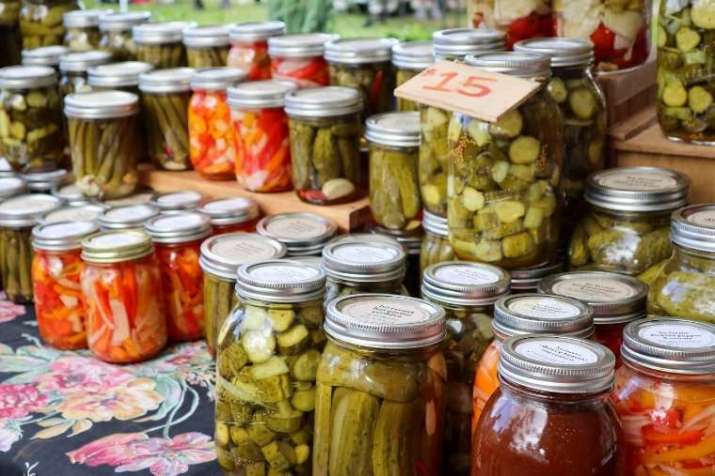 Photo by Little Plant
Photo by Little PlantOver the last six years, Dharma’s Garden has become a thriving center of social connection within the neighborhood, from our bustling on-site market days to weekly volunteer opportunities from school field trips to hands-on workshops from summer camps to seasonal festivals this land already offers so many ways that locals can connect with the earth and one another through the growing, harvesting and preparing of food. . . . What truly has been kindled here is an inspired way of living, a way in which humanity is wholly engaged in the noble mission of ethical stewardship of the Earth. We now have the opportunity to purchase this five-acre [two-hectare] parcel, a very special land, protecting it from encroaching development and preserving it as a living homestead for the benefit of future generations. We invite our friends and neighbors to participate in realizing this vision. (Dharmas Garden)
As I left Dharma’s Garden, I pledged a modest amount of money to help their endeavor to save the homestead. I will never forget the incredible scents, tastes, sounds, and sights—the colors and delight of laughter, watching the pond with its ducks, and admiring the rows of beautiful produce. We finished with a silent walk through the wildlife corridor, over the creek, in deep reverence for all that is present and alive, and the potential for it all to continue timelessly into the future, for the benefit of all living beings.
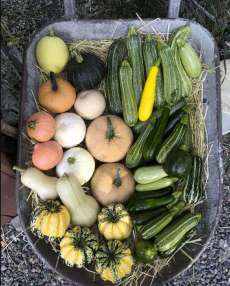 Photo by Dharma's Garden
Photo by Dharma's GardenSarah C. Beasley (Sera Kunzang Lhamo), 2019 Nautilus Gold award-winning author of Kindness for all Creatures: Buddhist Advice for Compassionate Animal Care (Shambhala 2019), has been a Nyingma practitioner since 2000. Sarah is a certified teacher and an experienced writer and artist, with an MA in Educational Leadership and a BA in Studio Art. Sarah spent six years in traditional retreat under the guidance of Lama Tharchin Rinpoche and Thinley Norbu Rinpoche. With a lifelong passion for wilderness, she has summited Mount Kenya and Mount Baker, among other peaks. Her book and other works can be seen at www.sarahcbeasley.com.
* Biodynamic (bio: life; dynamic: pertaining to energy, force, or power) agricultural methods were introduced by Rudolf Steiner (1861–1925), an Austrian scientist and philosopher. Steiner was also the founder of Anthroposophy and Waldorf Education. Through his research, Steiner was able to develop an understanding of how the unseen forces of the universe to affect the health and growth of plants and animals and, most importantly, the vitality of the soil.
See more
What is Biodynamics? (Biodynamics Association)
Dharma's Garden
Related features from Buddhistdoor Global
Right Mindfulness and Vegetable Gardens
Teachings from the Vegetable Patch
Green Shoots of Hope – Youth Climate Leaders in Asia and Africa
Buddhistdoor View: Overcoming Our Denial of Responsibility for Climate Change
One Foot on the Cushion and One in the Streets — Meditators for Climate Action
Buddhistdoor View: The Pandemic – Nature’s Patience Has Run Out
More from Creativity and Contemplation by Sarah C. Beasley
Buddhistdoor Global Special Issue 2021: Humanity in Transition














